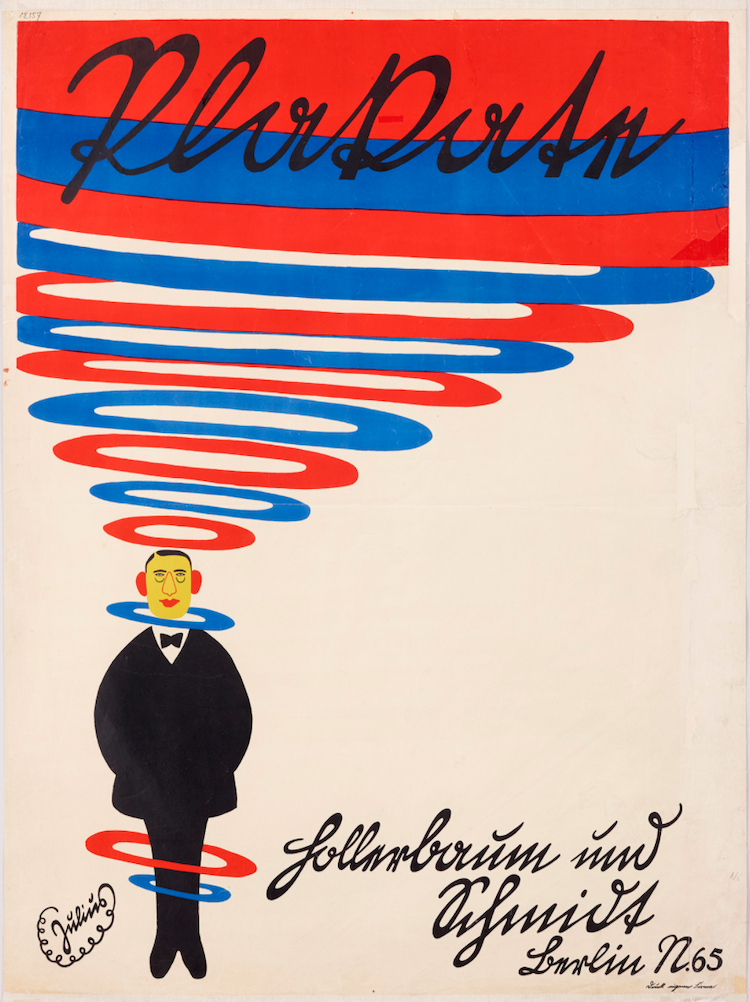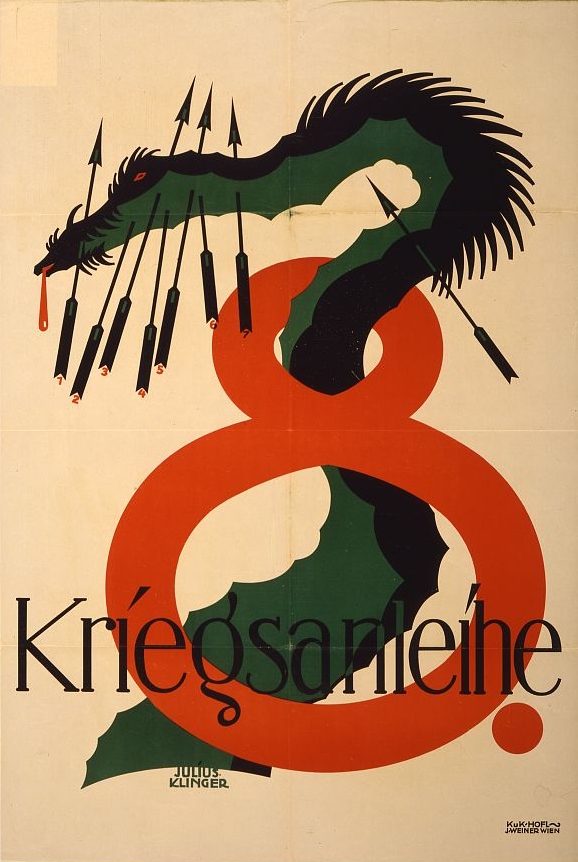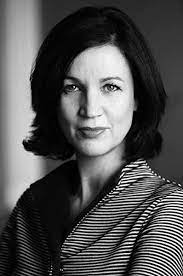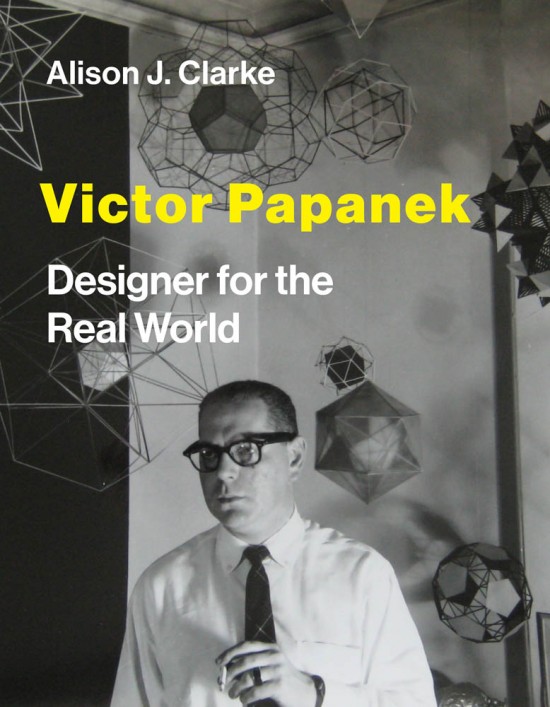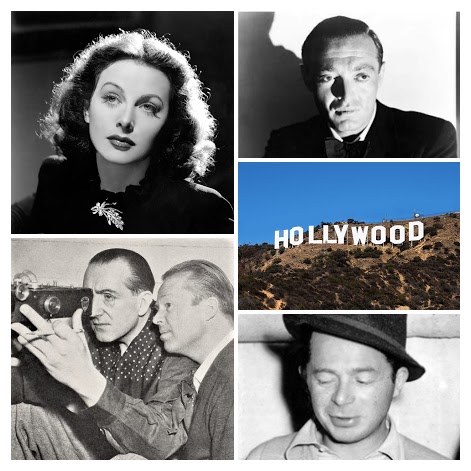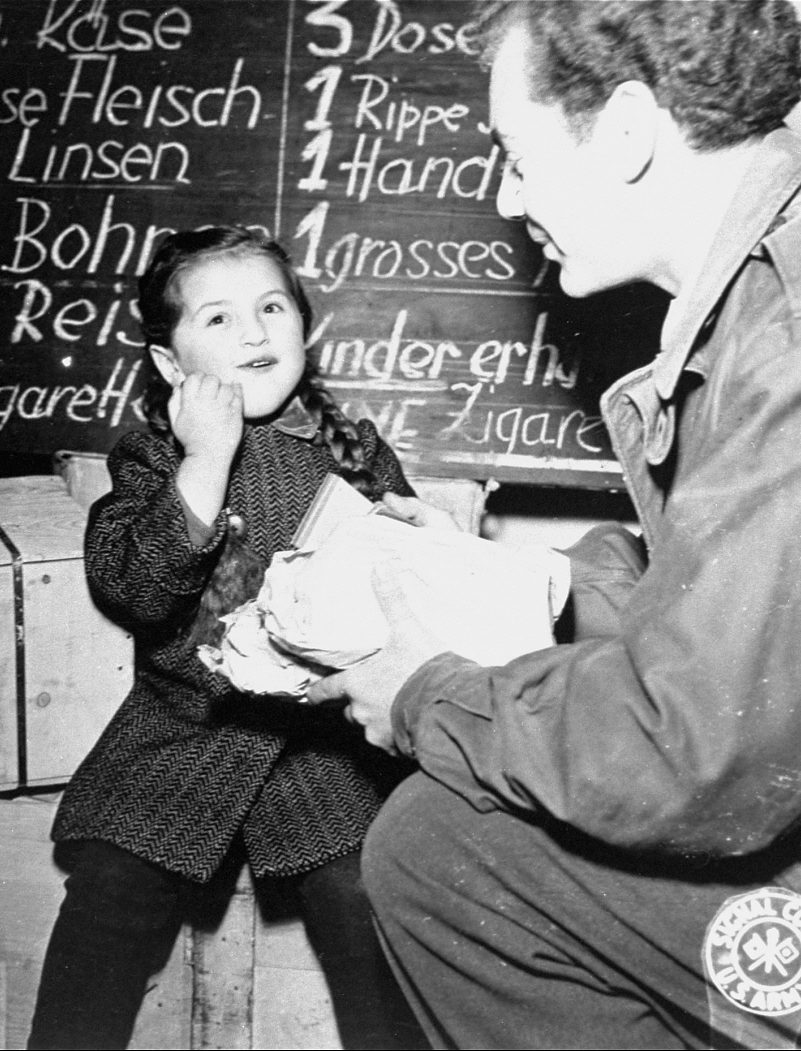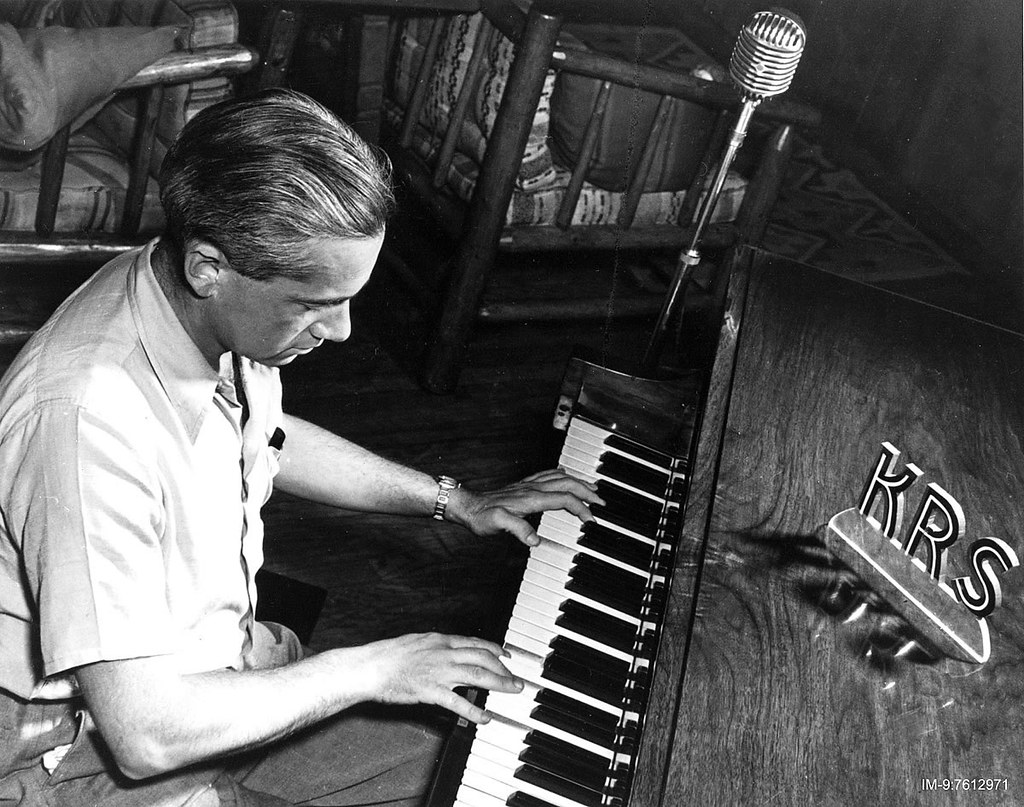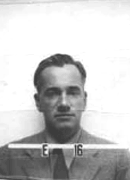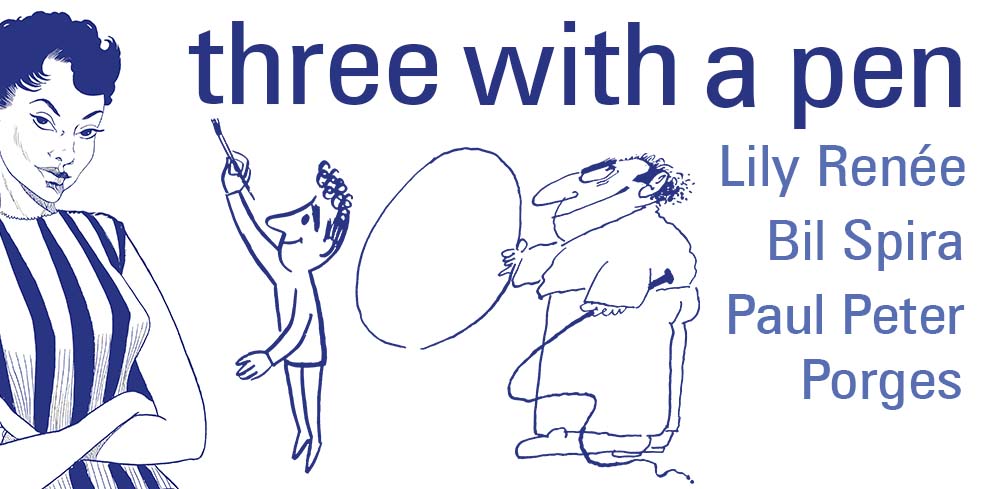BLOG
The BIAAS blog series features posts by junior and senior scholars in the field of Austrian-American studies. The views and opinions expressed in these blogs are those of the author and do not necessarily reflect the official policy or position of BIAAS.

BIAAS Austrian-American Blog
Drawn to America: Julius Klinger's Poster Art
By Karen Etingin
Viennese-born Julius Klinger (1876-1942) innovated advertising posters, book and magazine illustrations, mass promotional campaigns, and brand development, and he had a single-minded approach to an International Graphic Language. He became well known in his Austrian homeland as well as in Germany by the outbreak of WWI via an artistic reputation built on the strength and range of his designs, which were characterized by graphic simplicity, eponymous typefaces and irony. An advocate of “Americanismus,” and the progressive attitudes towards modern business and media coming from across the Atlantic, Klinger understood the power of modern trademarks and logos and their ability to give identity to major businesses and manufacturers.
Designing His Life: Victor Papanek
with Alison J. Clarke
Alison J. Clarke's new book, "Victor Papanek: Designer for the Real World," is the biography of the Austrian-American trailblazer in social design. In the late 1960s, Victor Papanek began writing his seminal "Design for the Real World" which argued for socially and ecologically sustainable design long before the ensuing movements years later. Published in 1971, the impact and relevance of his book persists globally.
As a teenager, Victor Papanek fled Nazi-occupied Austria with his mother to land in New York. Before he even began his studies at Cooper Union, Papanek's experiences in Vienna had shaped his socially-responsible outlook. In this podcast, Dr. Clarke explains why, to understand Papanek and his work, she had to examine his life as an Austrian-émigré.
Vienna in Hollywood
Call for Proposals
Organized by the Academy Museum of Motion Pictures, the USC Libraries, USC’s Max Kade Institute for Austrian, German, and Swiss Studies, and the Austrian Consulate General in Los Angeles, which initiated this project, “Vienna in Hollywood” will explore and highlight the impact of Austrians on the Hollywood film industry from the 1920s through the present. The symposium is part of an event series of the same name dedicated to Austrian and particularly Austrian-Jewish heritage in California, organized by the Austrian Consulate General in Los Angeles. The symposium will take place at the Academy Museum of Motion Pictures and at the University of Southern California in December 2021.
Americans in Vienna, 1945-1955
Tuesday, April 27, 2021
The Center for Austrian and German Studies at Ben Gurion University of the Negev (CAGS) and the Botstiber Institute for Austrian-American Studies invite you to their online conference! The papers by historians from Austria, Israel and the United States will focus on the varied presence of Americans in Vienna during the first decade after the Second World War. The conference keynote, titled "Americans in Vienna, 1945-1955," will be given by Prof. Guenter Bischof (The University of New Orleans).
Atom Splitting /Atomzertrümmerung: Austrian Manhattan Project Scientist Otto Robert Frisch in Los Alamos, 1943-1945
By Kristina Poznan
The U.S. government’s World War II Manhattan Project benefitted from the work of several scientists born in Austria-Hungary, from physicists to chemists to mathematicians. Elizabeth Rona, Leó Szilárd, Edward Teller, John von Neumann,[1] and Eugene Wigner were all from Budapest, George Placzek from Brno, and Stanislaw Ulam from Lviv. Among those born in Vienna were Victor F. Weisskopf and, most significantly for our purposes, Otto Robert Frisch.
Frisch arrived in the United States to work on “Project Y” in Los Alamos in1943 as part of “British Mission” cohort of scientists (Frisch had hurriedly been made a British citizen to participate). Frisch’s scientific work had already taken him from Vienna to Germany, Denmark, and England before the United States, including the laboratory of his renowned aunt, Lise Meitner, with whom he theorized the fission of uranium. Although Frisch returned to Europe in 1946 after the war, his three years in New Mexico are indicative of a wide contribution of Austro-Hungarian scientific training to Allied victory in World War II.
AUSTRIAN CULTURAL FORUM NEW YORK ANNOUNCES PRESENTATION OF THREE WITH A PEN: LILY RENÉE, BIL SPIRA, AND PAUL PETER PORGES
On view March 11 through September 3, 2021
The Austrian Cultural Forum New York, in cooperation with the Jewish Museum Vienna, presents Three with a Pen: Lily Renée, Bil Spira, and Paul Peter Porges featuring works by the three Jewish artists driven from their homes in Vienna after the German annexation of Austria, the so-called “Anschluss”, in 1938. On view March 11 through September 3, 2021, the exhibition showcases examples of their signature work in comic books, New Yorker cartoons, Mad magazine spoofs, caricatures, portraiture, fashion design, advertising, and children’s books, among other formats. Biographical material and ephemera amplify the artists’ personal stories of survival and, in part, help contextualize their professional achievements.

